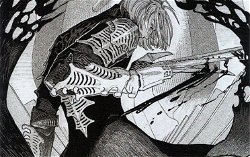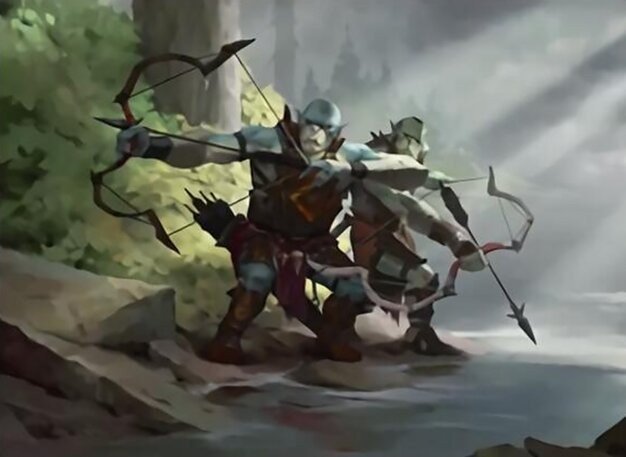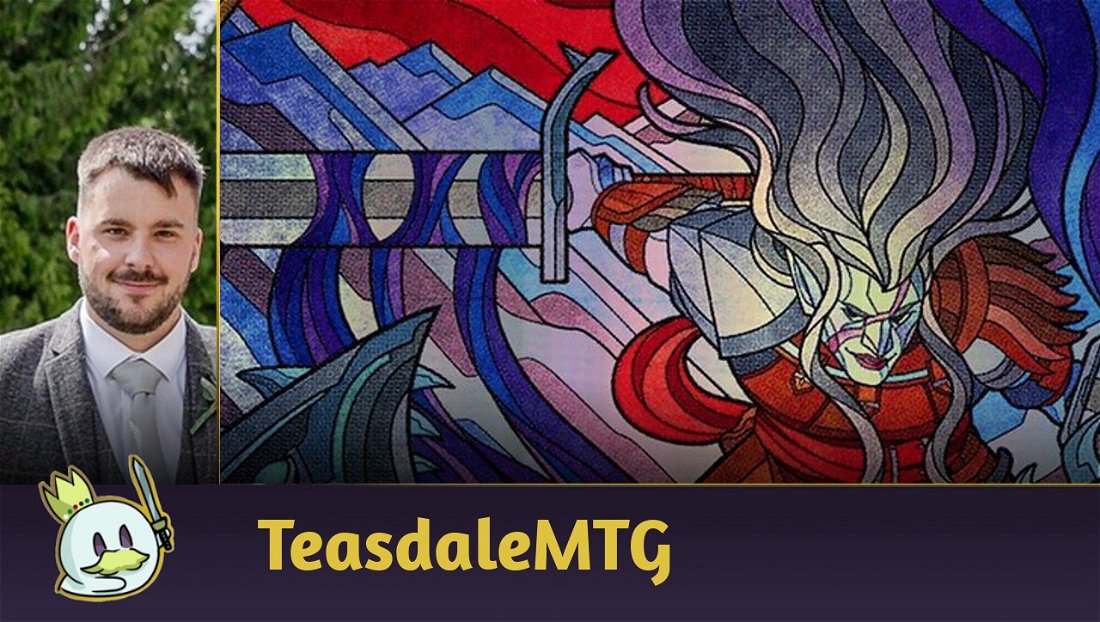Last Wednesday, June 14th, Wizards released a bug fix update to Magic Online (MTGO). Among the cards fixed is Metamorphic Alteration, which has received attention lately due to its combo with Archfiend of the Dross.
Last week, I presented my deck guide for the Explorer format, and as promised, in this article, I'll present an archetype update and sideboard guide for Pioneer.
Archfiend Alteration on Pioneer
Since the last update, several versions of the Metamorphic Alteration and Archfiend of the Dross combo have appeared on Pioneer. Some decks remain Grixis-based, where the combo operates as an immediate win condition on a Midrange shell - that's the version we'll cover in this article!
Other versions seem more focused on Dimir Control. Some combine the combo with cards like Torrential Gearhulk and/or Shark Typhoon to supplement the winconditions, while others take advantage of the combo's popularity to run Thing in the Ice + Heartless Act as an alternate method of winning the game.
These builds have potential, and perhaps become the proper home for Archfiend, as this strategy goes back to how Dimir Inverter used to play. However, most of the versions I've seen so far haven't produced relevant results, except for a Top 8 in a Preliminary.
Other variants are those that seek to add the combo to other already existing shells, as in the flex slots on Dimir Rogues, in Enigmatic Fires, or even in Esper Midrange with Raffine, Scheming Seer. These are also viable options, but which seem to open up more concessions to work.
The fact currently is that Archfiend Alteration is a powerful combo which, despite running a bad to average piece, has as another an efficient threat on its own, which ends up offsetting the cons.
However, finding the ideal home for the combo is no longer as obvious as it was in the days of Dimir Inverter. The Metagame and the format evolved, as did the way to integrate combos into an archetype to prevent it from becoming linear. So, it will still be a few more weeks before the Pioneer community finds the right home for these cards.
Decklist
Compared to the original list, there are some minor changes to the list to make it work more efficiently.

The first change was the inclusion of Bloodtithe Harvester instead of Bonecrusher Giant. It is due to the efficiency and interaction that Harvester guarantees for the other cards in the deck: it sacrifices itself to kill creatures and feed Corpse Appraiser and Dig Through Time, its Blood token helps improving Fatal Push (and removing the dependency on Fabled Passage to trigger Revolt), as well as removing dead draws from our hand in games where we need to find the combo.

Corpse Appraiser has gone up from two slots to four after the addition of Bloodtithe Harvester, despite still being a bit of a bad card in some games and having a restrictive mana value. The current Metagame still feels more creature-oriented, and its 3/3 body is very efficient at blocking, or favorably trading against, some of the format's top early game threats.
Consider is a card that seemed less and less necessary in this Midrange shell. There are few turns where I manage to spend the entire cycle with blue mana available to cast it, and its combo search potential doesn't compensate for itself when we want to have more proactive plays.
As a result, I took out a copy of Dig Through Time for the number of times drawing multiples of it was awful. I still believe we need three copies of it, since looking at the top seven cards can help its controller get out of sticky situations, or even close the game the next turn.
To complement the card advantage package, and take advantage of the increased number of creatures, I moved two copies of Reckoner Bankbuster to the maindeck, to improve attrition matchups, while still being able to maintain my resources in case I need to make one for one trades against other decks.

The manabase is constantly changing, and I'm still working on finding the ideal combination of lands to make everything work accordingly. One option I consider is to increase the numbers of Mana Confluence or Xander's Lounge.
Maindeck

Our combo. The deck wouldn't exist without it.
Archfiend of the Dross wins more games for being a 6/6 with Flying than for closing a combo with Metamorphic Alteration. Its ability to damage the opponent whenever a creature dies also makes for some great set-ups in post-sideboard games, alongside Brotherhood's End or Languish.
Metamorphic Alteration can be a dead card on its own, but there are some situations where playing it on one of your threats can be useful, such as for copying a bomb the opponent has put into play, like Sheoldred, the Apocalypse or Elesh Norn, Mother of Machines.

The creatures package.
Bloodtithe Harvester doubles as threat, removal, and hand filtering with its token. The fact that he comes into play in the second turn means that we can also open the game with a more aggressive posture.
Corpse Appraiser does a little bit of everything this deck wants: it puts one more body on the boards, filters its top, feeds the graveyard to Dig Through Time, sets a decent clock, and is a great target to copy with Fable of the Mirror-Breaker.
Fable of the Mirror-Breaker is still Pioneer's best card. Like Corpse Appraiser, it does a little bit of everything we want it to, while serving as the key piece that allows us to play a fair game on par with other Midranges.

Our removals package.
Six cards seems like a small number, but Bloodtithe Harvester also works as a removal, while our plan only needs the necessary removals until we close the combo and/or bury the opponent in card advantage.
Fatal Push is a necessity in a Metagame where aggressive strategies like Convoke and Spirits are growing, and it buys us enough time until Archfiend of the Dross finishes the game, or until we find sweepers in post-sideboard games.
Alongside Bloodtithe Harvester, Fatal Push gains a wider scope of targets, which includes Sheoldred, the Apocalypse and Crackling Drake.
Go for the Throat is our default removal against things Fatal Push doesn't kill, and should be saved for the most propitious moment, while Sheoldred's Edict is an efficient means of dealing with Planeswalkers at Instant-Speed.

Our protection package.
Thoughtseize is essential in this strategy to plan your next plays according to the opponent's deck, while also working to protect your combo the turn you intend to execute it.
Make Disappear and Spell Pierce are targeted interactions that work against mana-greedy archetypes such as Rakdos Midrange and Enigmatic Fires, while also being effective answers in Counterspell wars.

Dig Through Time is one of Magic's most powerful card selection effects, and we can play it masterfully as the game goes on. Three copies seemed like the appropriate number, given that it's common to cast two of them, with the third being targeted by discards or counterspells.
Reckoner Bankbuster is a staple of games where we need to extract value from our cards and maintain resource parity. Resolving it in the second turn and accompanying its activations with disruption is an excellent way to delay the opponent's game plan without harming ours. Bankbuster is also a threat alongside any of our creatures.

The mana base is more consistent when we have access to many lands that generate two or more colors. Therefore, we have a high number of Shock Lands and Fast Lands, alongside some specific pieces such as Underground River, Mana Confluence and Xander's Lounge to complement our access to colors in the appropriate time.
Castle Locthwain is one of the cards I've tested the most since the last article, and one that I've particularly liked for more interactive games, where we can't rely on the combo alone. Its extra draw per turn gives us more resources in the long run, and helps us find our Dig Through Time.
Sideboard

Counterspells are necessary for games where heavier spells are what define a player's victory or defeat. Two copies of Negate and Disdainful Stroke seem like the best option for the Metagame today, given that they both prevent the opponent's topdeck on cards capable of turning the game in their favor.

On the other hand, sweepers are needed to handle games against Aggro, but given the importance of creatures in Pioneer, it's only natural that some of them also make it into Midrange mirrors.
Brotherhood's End also serves to deal with unwanted artifacts, while Languish is a one-off pick that I've been pleased with in the match against Boros Convoke, as it deals with all the opponent's tokens, in addition to Venerated Loxodon and Knight-Errant of Eos.

Ray of Enfeeblement and Abrade are extra removals against creature decks, which also work against Abzan Greasefang, as they both deal Greasefang, Okiba Boss, while Abrade also resolves Esika's Chariot and Skysovereign, Consul Flagship.

Pithing Needle is one of the most important cards on our Sideboard in games where it matters. Some of its main targets are Witch's Oven, Karn, the Great Creator, Parhelion II, Teferi, Hero of Dominaria and Thespian's Stage.

Grixis Archfiend needs at least two slots on the Sideboard to play better against matchups where the combo is less efficient. There are several options in this color combination, and stand out Ashiok, Nightmare Muse, Sheoldred, the Apocalypse, Vraska, Betrayal's Sting, Reckoner Bankbuster, among others.
My package includes the combination of Pack Rat and Kolaghan's Command.
In fact, this version manages to play "Fair Magic" masterfully, and generate value through its plays without difficulties, so we don't need to invest as many slots in this regard, and we can prioritize flexibility over impact - that's why Kolaghan's Command goes into the Sideboard instead of a second copy of Pack Rat.
Pack Rat is a card that has been very present in Standard and Pioneer lists in the past. My decision to include it is because I wanted a card that would actively punish the opponent for trying to perform one-for-one trades with me, while also punishing them for trying to go for a topdeck war, as any card in my hand will always be, at the very least, food for the Pack Rat.
It also fits as a threat that demands an immediate answer: if the opponent fails to spend two removals in the turn this card comes into play, it is likely that they will never get rid of it, and will only manage to delay our clock. Alongside Reckoner Bankbuster, we manage to keep a good flow of cards to fatigue the opponent's hand, either before or after Pack Rat came into play.
Tips and Tricks
Mulligan
In essence, Grixis Archfiend Alteration is a Midrange with the possibility of a combo-kill from the fifth or sixth turn. Therefore, your keep against an unknown opponent boils down to considering whether you can play the first turns or whether you have the necessary elements to close the combo.
Spell-heavy hands with a cost of three or greater are surefire Mulligans, unless you have two lands and an early-game disruption and/or a cantrip. On the other hand, land-heavy hands are also a Mulligan because you need a more interactive posture.
In Games 2 and 3, where you already know how your opponent behaves, it is necessary to understand how you manage to win the game: would it be possible to go straight to the combo-kill without worrying about disruption, or do we need to play "fair game" and, if the opportunity arises, close the combo? Do we need more removal and/or more hand interaction, or counterspells? How important is securing our land drops in the first five turns? How vulnerable to Thoughtseize are you?
As with all of Pioneer's interactive strategies, this archetype doesn't give you many decisions written in stone, and it depends on the posture that each game forces you to have and/or what are the key cards you want to play or prevent your opponent from playing.
Postures
Archfiend Alteration is a very flexible archetype, but we need to understand what our best chances of winning the game are to know which cards to fetch with our cantrips or which to discard with Fable of the Mirror-Breaker.
In a general context, the less interactive the opponent's deck is, it is likely that your best option is to close the combo as soon as possible. Archetypes like Humans, Mono Green Devotion, Boros Convoke, and Mono Red Aggro aren't strategies we can beat playing fair, so our best route is to hold the game long enough to enchant one of their creatures with Metamorphic Alteration.
Against more interactive decks, the combo possibility still exists, but we need a more proactive plan, based on making them spend resources and opening up opportunities for us to execute the combo, or for us to win the game by attacking in the air with Archfiend of the Dross.
Tips
Metamorphic Alteration can be used on your creatures to copy an opponent's greater threat. In fact, this play is more common than it seems in Midrange games.
Elesh Norn, Mother of Machines doesn't work against our combo, as Metamorphic Alteration's ability is not an ETB trigger, but an effect that occurs as it enters the battlefield.
If the opponent doesn't have an answer on their turn, they can't take any actions until their upkeep, where the Archfiend of the Dross's trigger is already on the stack, and they lose the game even if they destroy the creature and/or the enchantment, as the trigger is from the object that triggered the ability, not the name of the card itself.
You can use Metamorphic Alteration on one of your creatures to copy Reflection of Kiki-Jiki. In this way, we can use the combo of making one Reflections copy the other at the end of the opponent's turn, to have an army of copies, ready to attack on our turn.
Corpse Appraiser can feed from your graveyard as well. This is important for situations where you don't want to increase the clock of a Graveyard Trespasser.
You can copy Archfiend of the Dross with Reflection of Kiki-Jiki to attack with one more 6/6 creature with flying. Winning games with this combination is way more common than it seems.
Archfiend of the Dross has a second ability, where it makes the opponent lose 2 life every time a creature they control dies. You can increase your clock with it through removals, or by trading blockers/attackers with your other creatures.
It's not because you have the combo in your hand that you should try to close it. There are times when the best route is to use Metamorphic Alteration to copy another impactful threat, then cast the demon and put the opponent in a position where they need to choose which creature to destroy.
Sideboard Guide
Rakdos Midrange
IN

OUT

Mono Green Devotion
IN

OUT

Rakdos Sacrifice
IN

OUT

Azorius Control
IN

OUT

Humans
IN

OUT

Abzan Greasefang
IN

OUT

Azorius Spirits
IN

OUT

Keruga Fires
IN

OUT

Izzet Creativity
IN

OUT

Mono Red Aggro
IN

OUT

Selesnya Angels
IN

OUT

Boros Convoke
On the Play:
IN

OUT

On the Draw:
IN

OUT

Lotus Combo
IN

OUT

Izzet Phoenix
IN

OUT

Conclusion
The Grixis Archfiend is just one of dozens of the new combo variants that have popped up on Pioneer. In the coming weeks, it is likely that we will see the deck evolve and new proposals for this strategy emerge, as has been happening with the Rona Combo.

One version I'm interested in testing is the Grixis Control variant, as it allows me to follow a more focused plan, and gives me access to a mana base that can have more copies of Xander's Lounge, as well as allowing me to run Maestros Charm, a card capable of taking on a variety of threats, while also functioning as an excellent card selection that follows up incredibly well into Dig Through Time.
Thanks for reading!














— Comentarios 0
, Reacciones 1
Se el primero en comentar